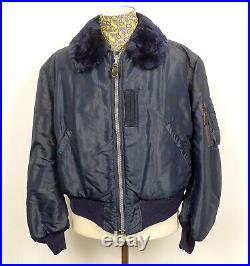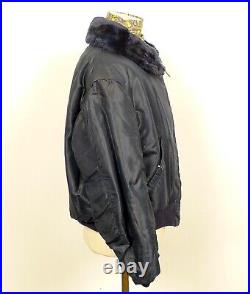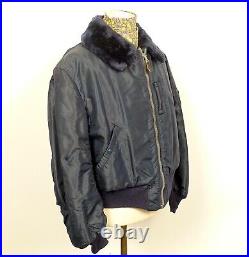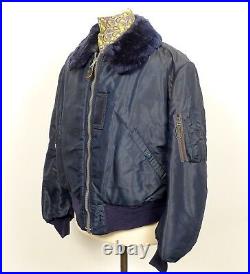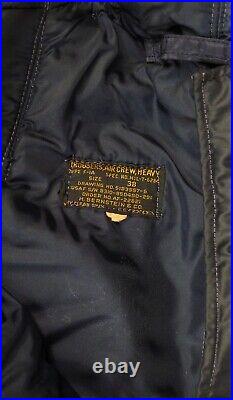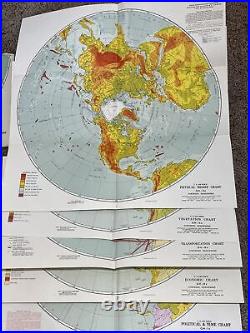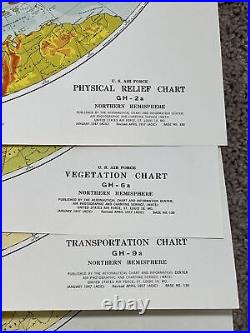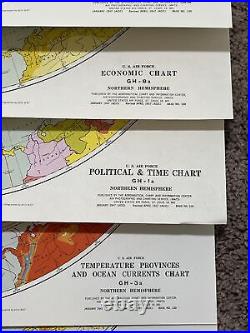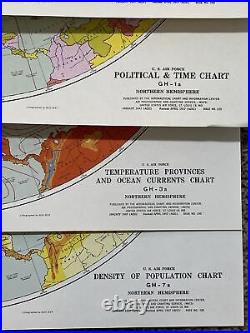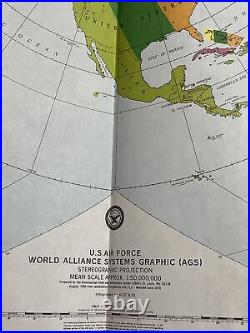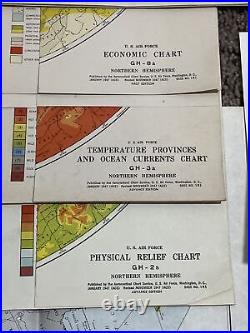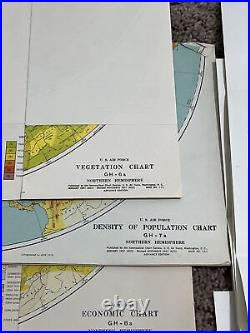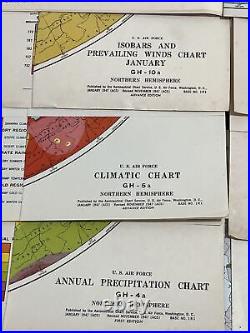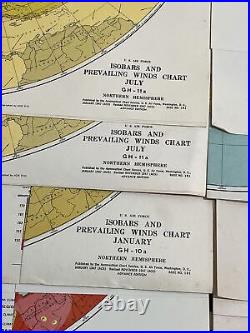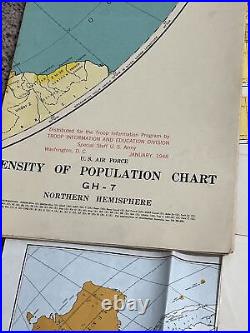Monthly Archives: August 2024
Vtg Diecast B29 Superfortress Metal Airplane Model Figure 11×16 Us Air Force

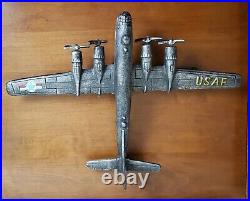
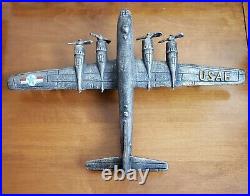
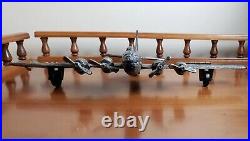
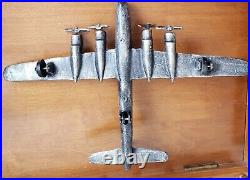

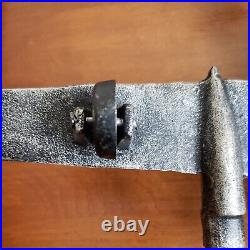


Nonsmoking, Pet Free Environment. The B-29 Superfortress heavy bombers were some of the largest aircraft in service during WW2. Equipped with four engines, they were not only powerful but also very advanced in design. They were equipped with fully pressurized fuselage, central fire control systems, and remotely controlled machine gun turrets. Aircraft this size and complexity were not easy to build, however. Four plants across the United States manufactured various components of the bombers, and sometimes bombers coming out of the factories were sent directly to depots for immediate modifications because of a recent design change. Although the complexity of the design caused a lot of production headaches, the issue that gave the design the biggest problem was the reliability of the Wright R-3350 engines. The engine constantly overheated and burned under stress, particularly during takeoffs, due to insufficient air flow. The problem was never completely resolved before the end of WW2. In general, B-29 pilots like the flight characteristics of the bombers starting in the earlier models. The unboosted controls were heavy and requested strength to operate, but advanced instrumentation made flying and navigation easy. In fact, a B-29 pilot could fly entirely on instrumentation should the pilot choose to do so. In flight, the pilots called for engine and flap settings reminiscent of how a sea captain would call for engine and rudder settings. In combat, although Superfortress bombers were not as heavily armored as other Allied bombers, they possessed one defense that no others could compete with. They were capable of flying at the altitude of 10,200m, just above the service ceiling of most Japanese fighters and just beyond the range of most anti-aircraft weapons. Their fast airspeed also made them difficult to intercept by fighters that could fly that high. The B-29 bombers were initially based in India (starting Apr 1944) and China (starting Jun 1944), attacking Japanese targets in Thailand and the Pacific rim. On 15 Jun 1944, 47 B-29 bombers took off from Chengdu, China and attacked the Imperial Iron and Steel Works at Yawata, Japan, marking the first attack on the Japanese Home Islands since the Doolittle Raid in Apr 1942; one bomber was lost during this mission. A total of 12 such similar bombing missions from India or China on Japan took place before they were transferred to the newly captured/constructed airfields in the Mariana Islands. The first bombing mission from the Marianas took place on 28 Oct 1944 (against Truk), and within a month missions were launched for major Japanese cities such as the capital Tokyo. These firebombing raids by Superfortress bombers devastated the war making capabilities of Japan and demoralized the Japanese population. Among the last WW2 combat missions that employed B-29 bombers were the 6 Aug 1945 atomic bomb attack on Hiroshima by Enola Gay and the 9 Aug 1945 atomic bomb attack on Nagasaki by Bockscar. In WW2, B-29 bombers were used exclusively by the United States Army Air Force in the Pacific Theater. After the war, B-29 Superfortress bombers remained in service with the newly created United States Air Force through subsequent conflicts such as the Korean War. In that conflict, the changing nature of war reduced the number of strategic targets for B-29 bombers to strike and Soviet fighter innovations (namely, the MiG-15 jet fighter designed specifically to combat B-29 bombers) restricted the usefulness of these bombers. The US Navy also employed four of them, but they were restricted to long range search missions only. Aboard, 87 B-29 bombers were lent to the British Royal Air Force to serve as longer range nuclear-capable bombers between 1950 and 1955; two of them made their way to the Royal Australian Air Force for research between 1952 and 1956. Russia and Communist China also had a small number in service. These Russian variants were built after reverse engineering several captured early model B-29 bombers; they served under the designation Tu-4. They were removed from duty in the 1960s. During the active production period of the B-29 design, 3,970 were built.

Korean War US Air Force B-15c Flight Jacket & Pants WithSuspenders Size 44 #318
Air Force 1 172 USAF Lockheed SR-71A Blackbird Reconnaissance Aircraft AF10088H
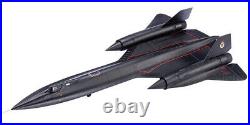
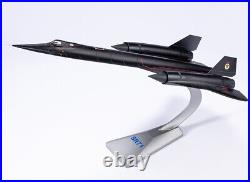
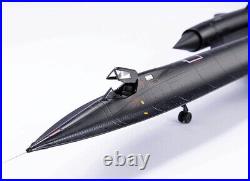

You know the part in’High Flight’ where it talks about putting out your hand to touch the face of God? Well, when we’re at speed and altitude in the SR, we have to slow down and descend in order to do that. Gil Bertelson, SR-71 pilot, in’SR-71 Blackbird: Stories, Tales and Legends,’ 2002. The Lockheed SR-71 was an advanced, long-range, Mach 3 strategic reconnaissance aircraft developed from the Lockheed A-12 and YF-12A aircraft by the Lockheed Skunk Works. The SR-71 was unofficially named the Blackbird, and called the Habu by its crews. Clarence “Kelly” Johnson was responsible for many of the design’s innovative concepts. A defensive feature of the aircraft was its high speed and operating altitude, whereby, if a surface-to-air missile launch were detected, standard evasive action was simply to accelerate. The SR-71 line was in service from 1964 to 1998, with 12 of the 32 aircraft being destroyed in accidents, though none were lost to enemy action. The Air Force ordered a reconnaissance version in December 1962. Originally named R-12, it was later renamed SR-71. The SR-71 was longer and heavier than the A-12. Its fuselage was lengthened for additional fuel capacity to increase range. A second seat was added to the cockpit and the chines were reshaped. Reconnaissance equipment included signals intelligence sensors, a side-looking radar and a photo camera. During the 1964 campaign, Republican presidential nominee Barry Goldwater continually criticized President Lyndon B. Johnson and his administration for falling behind the Soviet Union in the research and development of new weapons systems. Johnson decided to counter this criticism by releasing information on the hitherto highly classified A-12 program, and later the existence of the reconnaissance version. The SR-71 designator is a continuation of the pre-1962 bomber series, which ended with the XB-70 Valkyrie. During the later period of its testing, the B-70 was proposed for the reconnaissance/strike role, with an RS-70 designation. When it was clear that the Lockheed A-12 performance potential was much greater, USAF decided to pursue an RS-71 version of the A-12 rather than the RS-70. However, then-USAF Chief of Staff General Curtis LeMay preferred the SR (Strategic Reconnaissance) designation and wanted the RS-71 to be named SR-71. Before the Blackbird was to be announced by President Johnson on February 29th, 1964. LeMay lobbied to modify Johnson’s speech to read SR-71 instead of RS-71. The media transcript given to the press at the time still had the earlier RS-71 designation in places, creating the myth that the president had misread the aircraft’s designation. This public disclosure of the program and its renaming came as a shock to everyone at the Skunk Works and to Air Force personnel involved in the program. All of the printed maintenance manuals, flight crew handbooks, training slides and materials were labeled “R-12″; while the June 18th, 1965 Certificates of Completion issued by the Skunkworks to the first Air Force Flight Crews and their Wing Commander were labeled “R-12 Flight Crew Systems Indoctrination, Course VIII”. Following Johnson’s speech the name change was taken as an order from the Commander-in-Chief, and immediate reprinting began of new materials, including 29,000 blueprints, to be retitled “SR-71″. Pictured here is a 1:72 scale replica of a USAF Lockheed SR-71A Blackbird reconnaissance aircraft. Dimensions: Wingspan: 9-1/4-inches Length: 17-3/4-inches. Features: – Diecast construction – Interchangeable landing gear options – Fully articulated control surfaces – Plexiglass canopy – Canopy opens to reveal a detailed cockpit – Accurate markings and insignia – Comes with display stand. Historical Account: “Oxcart” – In July 1964, President Lyndon B. Johnson announced the development of the Lockheed SR-71 Blackbird strategic reconnaissance aircraft. This new and advanced aircraft would give SAC a reconnaissance capability that far exceeded any then available in terms of speed, altitude, and increased area coverage. In December 1964, the Department of Defense announced that the 4200th Strategic Reconnaissance Wing would activate at Beale Air Force Base, California on January 1st, 1965, as the parent unit of the SR-71. To prepare Beale AFB for its new mission, contractors lengthened the runway, remodeled the former Air Defense Command Semi-Automatic Ground Environment building, and constructed several new facilities, including 337 additional housing units. The wing was assigned to the 14th Strategic Aerospace Division and consisted of the 4201st Strategic Reconnaissance Squadron, three maintenance squadrons and the 4203d Reconnaissance Technical Squadron. In January 1966, the first SR-71 touched down on the Beale runway. The first T-38 Talon, a Northrop-built aircraft to be used as a trainer and chase plane for the SR-71, had arrived six months earlier. In October 1965, Fifteenth Air Force suggested the 9th Bombardment Wing be redesignated as the 9th Strategic Reconnaissance Wing to continue the history of the 9th. The Air Force accepted the suggestion and on June 25th, 1966, the 4200th wing and its components were discontinued and the 9th Strategic Reconnaissance Wing transferred to Beale to take its place. The Air Force also activated the 9th Reconnaissance Technical Squadron to replace the 4203d Reconnaissance Technical Squadron. Both the 1st and 99th squadrons moved with the 9th, while the 5th inactivated. For the remainder of 1966, the 9th Strategic Reconnaissance Wing developed the organization and infrastructure necessary for SR-71 operations. The wing included a Director of Intelligence and a Director of Tests, who monitored the exhaustive testing program in the primary stages. The wing also needed its own supply squadron to handle the specialized supplies and equipment this unique aircraft would need.

U S Air Force C 17 Globemaster III Showing The Insane Quick Takeoff To Ukraine
VTG 80s Cold Weather CWU-45P Jacket Air Force Military Bomber Flyers Mens Medium












This vintage military jacket from the 80s is a must-have for any collector of militaria. The jacket is an original, authentic piece that was made in the United States and is perfect for anyone interested in the history of military aviation. The jacket features a unique design that is perfect for any bomber or flyer enthusiast. The jacket is made of high-quality materials and has a medium fit. It is a great addition to any collection of original period items or militaria. This jacket is a true piece of history and would make a great display item for anyone interested in military aviation.

1200 IF200 U. S. Air Force Lockheed C-130J 99-5309 withStand
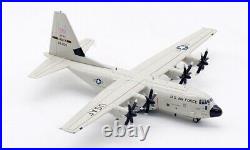
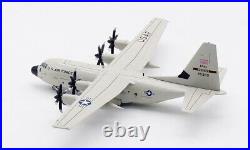
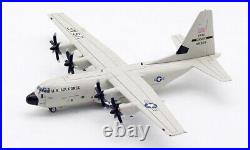
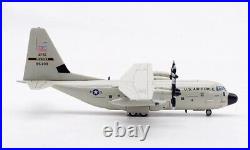
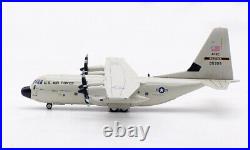
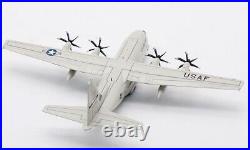
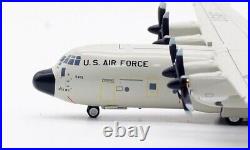

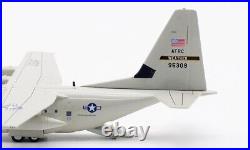
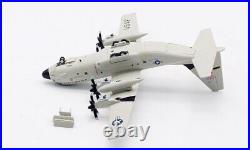
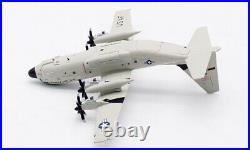
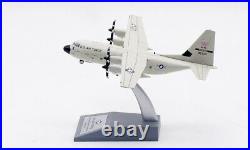

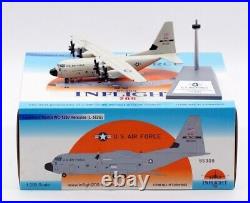

This is a h. Igh quality die-cast model made with high technical tampo printing realistic print of the airline livery, achieving with this accurate details on the surface, including antennas, registration, panel lines and windows, leaving nothing to the imagination. Limited edition, a brand-new, unused, unopened, with stand, (including handmade items). Airline: USA – Air Force (53rd WRS Hurricane Hunters). Model: Lockheed C-130J Hercules. Dimensions: 5.86 x 7.95 x 2.32 Inches. Weight: 2.1 pounds.

Vintage Air Force Charts Lot Of 19 1947 1966 Economic Political Climatic
Lockheed Martin SR-71A Blackbird Aircraft #17974 United States Air Force 1/72
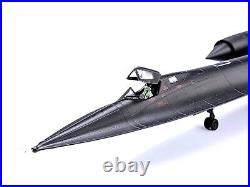
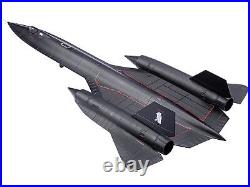
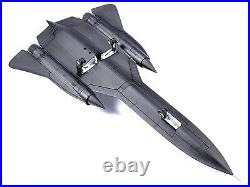
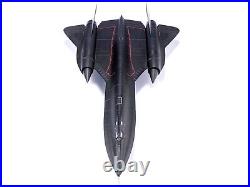
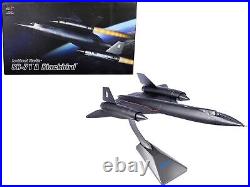

Brand new 1/72 scale diecast model of Lockheed Martin SR-71A Blackbird Aircraft #17974 “United States Air Force” die cast model by Air Force 1. Dimensions approximately Length- 17.75, Wingspan- 9.25 inches. Diecast metal and plastic construction for durability and a heavy, realistic feel. It is a highly detailed and accurate model, perfect for collectors and enthusiasts of military history. Realistic panel lines, antennas, access panels, and surface details for an authentic representation of the real-life airplane. The SR-71 Blackbird is a long-range, high-altitude reconnaissance aircraft developed by the U. Air Force in the 1960s. It was designed to fly at speeds exceeding Mach 3 and at altitudes of up to 85,000 feet, making it virtually invulnerable to enemy defenses. The Blackbird was used extensively during the Cold War to gather intelligence on Soviet military capabilities, and also saw action in a number of other conflicts, including the Vietnam War and the Gulf War. One of the most famous Blackbirds was the 61-17974, which was operated by the U. Air Force from 1967 until its retirement in 1990. It holds the record for the fastest air-breathing manned aircraft, with a top speed of 2,193 mph (3,529 km/h). The 61-17974 was also involved in several important missions, including Operation Eldorado Canyon, which was a U. Military operation against Libya in 1986. The 1:72 scale model of the SR-71 Blackbird 61-17974 is a highly detailed replica of this iconic aircraft. It features a sleek black finish with authentic markings and detailing, and is made from high-quality materials to ensure durability and accuracy. Whether you’re a collector or a history buff, this model is a must-have for anyone interested in the fascinating world of aviation. With its incredible speed, cutting-edge technology, and rich history, the SR-71 Blackbird is one of the most legendary aircraft ever built. And now, with this stunning model of the 61-17974, you can own a piece of that history for yourself. So don’t wait – order yours today and experience the thrill of the Blackbird!

STRATEGIC AIR COMMAND DISPLAY PLATE 11 METAL RARE. & Great Seal Of The US Plate
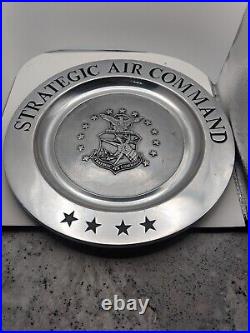
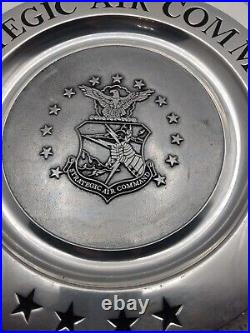
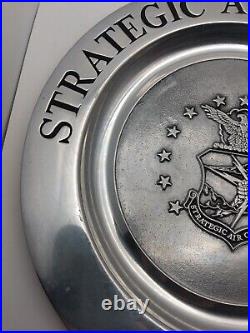
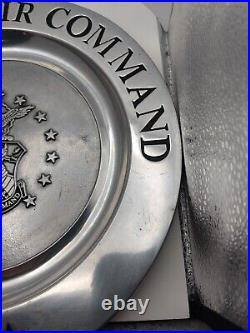


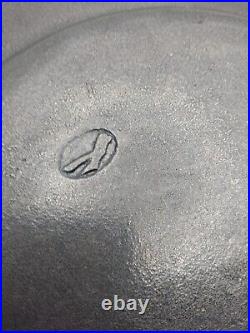

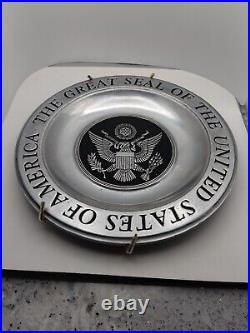
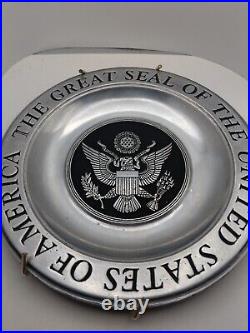
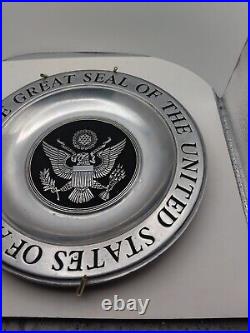
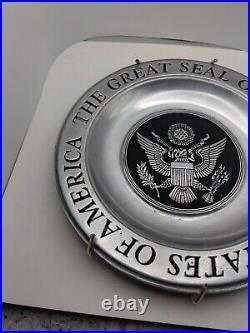
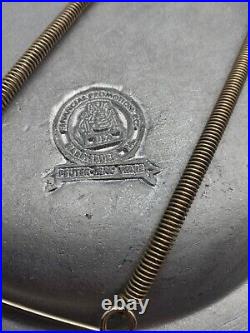
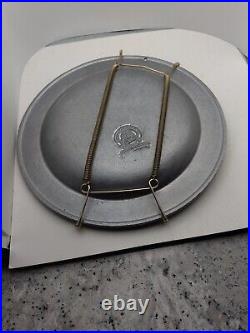

This rare and unique 11 metal plate features the Great Seal of the United States and is a must-have for any collector of militaria. With its strategic air command design and Air Force force theme, this plate is a perfect addition to any collection or display. Made in the United States, this plate is a true piece of history and a great conversation starter. Perfect for display in any room of your home or office, this plate is sure to impress.




